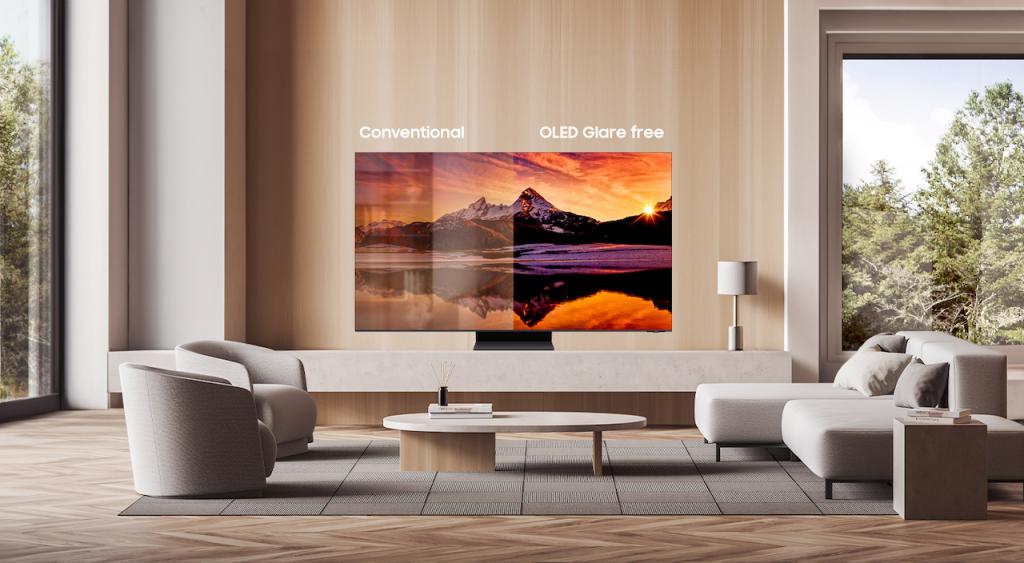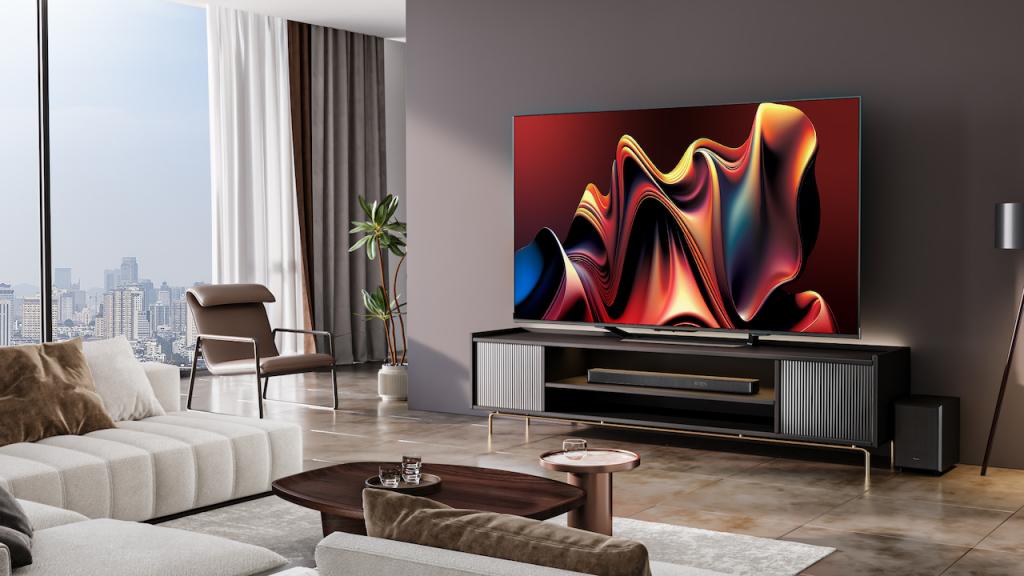CES is a beautiful time for people who love seeing tech companies announce things that may or may not ever be released in Australia at prices that may or may not be reasonable. This year, there were a lot of TVs at CES. Yes, there was the usual “this TV is the same as last year’s version, but the numbers are higher”, but there were also some truly incredible TVs that were actually exciting and most people cannot afford.
You can see through LG’s latest TV
To start off with the exciting, LG has a transparent TV now. It looks absolutely glorious and solves the “I don’t like having a black mirror in my living room” in a way that’s innovative and fresh. The LG Signature OLED T uses a Zero Connect Box, so there’s no cables going into the TV itself at all. We don’t know how much it’ll cost yet, but it’s safe to assume “a lot”.
In addition to that, LG also announced the usual updates and refreshes. The OLED Evo range is getting a new Alpha 11 processor, which promises big percentage upgrades over the old processor. There’s a lot of AI features in it, including AI for colour mapping, motion smoothing, and upscaling. The OLED Evo screens go up to 97” now. Basically, if there was a TV in the old LG line, they now have a 2024 version of that.
LG also has a really beautiful projector that has an old-school design aesthetic, which I am obsessed with.
Samsung wants to help you with ball distortion

Samsung also has a transparent TV, but it’s just a concept for now. Presumably they are kicking themselves for not getting to market first.
What Samsung does have is a refresh of the full range of TVs, with the fanciest ones driven by the new NQ8 AI Gen 3 Processor, which has a neural processing unit twice as big as the old one. Samsung is going all-in on AI this year across the board, with the press release touting these new Ai-enhanced features for the top-of-the-line Neo QLED TVs:
“8K AI Upscaling Pro: Leverages NQ8 AI Gen3 for enhanced 8K upscaling, sharpening low resolution content so that it is displayed in ultra-high resolution.
AI Motion Enhancer Pro: Solves common issues in sporting contents — such as ball distortion — by streaming high-resolution sports matches through this feature powered by NQ8 AI Gen3. The feature automatically detects the sport type and uses deep learning to apply the proper ball detection model.
Real Depth Enhancer Pro: Adds details to fast-moving scenes using AI to precisely control mini LEDs. By detecting the part of a scene that the human eye would naturally focus on and bringing it to the foreground, images appear more lifelike and three dimensional.
Infinity Air Design: Complements Neo QLED 8K’s impeccable picture quality with a screen only 12.9mm in depth, allowing for an immersive viewing experience that focuses on high resolution and outstanding sound quality. It is also offers a unique mirror effect in which the TV appears to hover in its surroundings.”
Normally I’m a bit apathetic about shoving AI into more things, but this gives us the opportunity to discuss ‘ball distortion’, and I’m not looking that gift horse in the mouth.
The Samsung OLED range also promises to have less glare (no glare, even, if you trust the press release) and The Frame is so popular that Samsung is releasing an audio version of it.
Hisense has a massive sonic screen laser TV

The big headline from Hisense is that the brand is going weird and getting creative. It announced “the world’s first 8K Sonic Screen Laser TV” with 3.4 square metres of sound area and 100,000+ sound units. Basically, it’s a set up with a very short throw laser projector, and a screen made out of speakers. Mere mortals probably can’t afford it, but it’s a cool concept.
Hisense also showed off a Rollable Laser TV, which offers another solution to the “giant black mirror” problem.
In terms of TVs you can afford, the rest of the Hisense TV range was also refreshed, and the company added a new 98” ULED X model with a peak brightness of 5,000 nits, and a 100” QLED TV that Hisense promises will have an “unbeatable” price. There’s also a Frame-like Canvas TV, which looks pretty neat.
TCL says that size does matter, actually
Not to be outdone, TCL casually announced a 115” TV. TCL claims the 115QM89 is the world’s largest QD Mini LED TV. It’s got 20,000 dimming zones, the company’s new TCL AIPQ Ultra processor, and a 6.2.2 speaker system.
In a statement, Scott Ramirez, VP, Product Marketing and Development, Home Theatre at TCL said “”In 2024, TCL will raise the bar with our new premium QD Mini LED, providing a never before seen level of TV picture quality. We will also enhance sound quality, cosmetic designs, and screen sizes with more 98″ TVs and an all-new mega 115″ screen size. In short, TCL will continue our promise to provide the best possible combination of quality, technology, and value, from our new best-in-class S5 4K UHD, to our new industry leading QM8 QD Mini LED, and to our new complimentary Dolby Atmos sound bars. In 2024, you need to watch TCL!”
Pricing for the 115” TV has not been announced yet, but it’s likely one of those “if you have to ask, you can’t afford it” situations.
In addition to the massive TV, TCL also refreshed the S Class and Q Class TV ranges with brighter screens, more screen size options and “AI Super Resolution”.
None of the release dates and prices for any of these TVs have been released yet, but we’ll let you know when we know.
